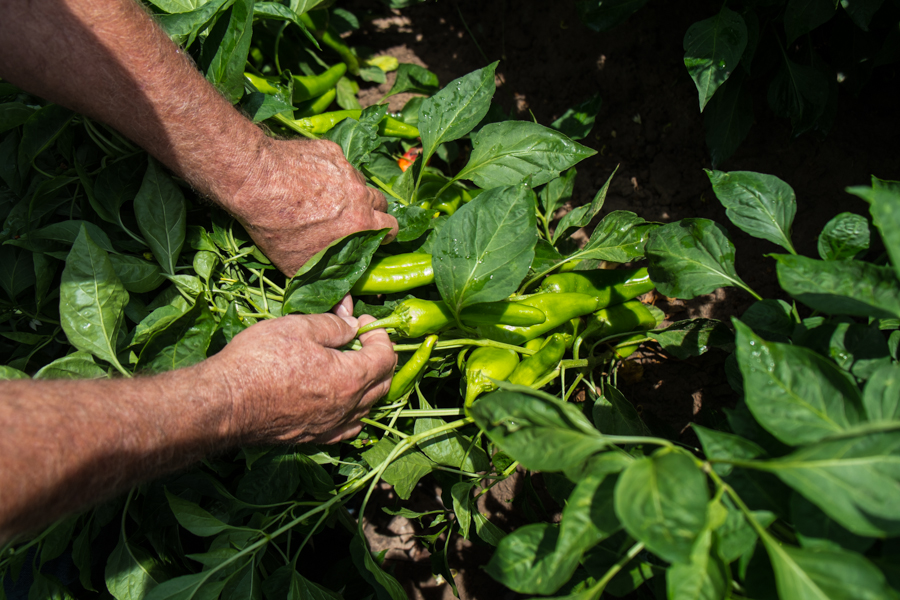On a bit of a water nerd’s lark today, I ended up knee deep in a chile field outside Salem, New Mexico, in the area technically known as the Rincon Valley but more commonly called the Hatch Valley.
It’s a ribbon of green (to borrow John Van Dyke’s memorable phrase) gripping the Rio Grande as it flows out of the dammed narrows of Elephant Butte and into one of New Mexico’s most productive farming regions.
It’s all relative. The Rio Grande is no Colorado River, and Doña Ana County is no Imperial Valley. But for my desert state, what we call “the Lower Rio Grande” is as big as big ag gets. You can drive for miles through gorgeous pecan orchards, but there is no more iconic crop than the New Mexico chile. And there is no more iconic chile than the Hatch green chile.
Chiles aren’t a huge part of New Mexico’s economy – $65 million in 2012, just 1.6 percent of some $4 billion in farm receipts, according to the USDA. But it’s an identity thing for us.
It’s a desert, averaging less than 10 inches (25 cm) of rain a year, concentrated in the summer months. So the chile depends on irrigation water – from the historic U.S. Reclamation Service’s Rio Grande Project, which stores water at Elephant Butte Reservoir, or from groundwater pumps. These days, Elephant Butte is near empty, so the farmers depend on an increasingly tenuous groundwater supply. But today, in the field, there was chile. And at lunch at the Pepper Pot in Hatch, I had the sweetest, most delicious chile relleno that it has ever been my good fortune to eat.


I had the sweetest, most delicious chile relleno that it has ever been my good fortune to eat.
Butbutbut ag only accounts for { } of gross state product! Lawns!
Back to reality: envious. Mine are way behind because of multiple weather abuses.
Best,
D